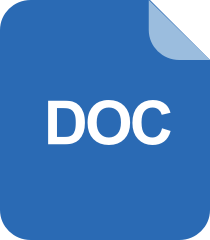GNU LESSER GENERAL PUBLIC LICENSE
Version 2.1, February 1999
Copyright (C) 1991, 1999 Free Software Foundation, Inc.
51 Franklin Street, Fifth Floor, Boston, MA 02110-1301 USA
Everyone is permitted to copy and distribute verbatim copies
of this license document, but changing it is not allowed.
[This is the first released version of the Lesser GPL. It also counts
as the successor of the GNU Library Public License, version 2, hence
the version number 2.1.]
Preamble
The licenses for most software are designed to take away your
freedom to share and change it. By contrast, the GNU General Public
Licenses are intended to guarantee your freedom to share and change
free software--to make sure the software is free for all its users.
This license, the Lesser General Public License, applies to some
specially designated software packages--typically libraries--of the
Free Software Foundation and other authors who decide to use it. You
can use it too, but we suggest you first think carefully about whether
this license or the ordinary General Public License is the better
strategy to use in any particular case, based on the explanations below.
When we speak of free software, we are referring to freedom of use,
not price. Our General Public Licenses are designed to make sure that
you have the freedom to distribute copies of free software (and charge
for this service if you wish); that you receive source code or can get
it if you want it; that you can change the software and use pieces of
it in new free programs; and that you are informed that you can do
these things.
To protect your rights, we need to make restrictions that forbid
distributors to deny you these rights or to ask you to surrender these
rights. These restrictions translate to certain responsibilities for
you if you distribute copies of the library or if you modify it.
For example, if you distribute copies of the library, whether gratis
or for a fee, you must give the recipients all the rights that we gave
you. You must make sure that they, too, receive or can get the source
code. If you link other code with the library, you must provide
complete object files to the recipients, so that they can relink them
with the library after making changes to the library and recompiling
it. And you must show them these terms so they know their rights.
We protect your rights with a two-step method: (1) we copyright the
library, and (2) we offer you this license, which gives you legal
permission to copy, distribute and/or modify the library.
To protect each distributor, we want to make it very clear that
there is no warranty for the free library. Also, if the library is
modified by someone else and passed on, the recipients should know
that what they have is not the original version, so that the original
author's reputation will not be affected by problems that might be
introduced by others.
Finally, software patents pose a constant threat to the existence of
any free program. We wish to make sure that a company cannot
effectively restrict the users of a free program by obtaining a
restrictive license from a patent holder. Therefore, we insist that
any patent license obtained for a version of the library must be
consistent with the full freedom of use specified in this license.
Most GNU software, including some libraries, is covered by the
ordinary GNU General Public License. This license, the GNU Lesser
General Public License, applies to certain designated libraries, and
is quite different from the ordinary General Public License. We use
this license for certain libraries in order to permit linking those
libraries into non-free programs.
When a program is linked with a library, whether statically or using
a shared library, the combination of the two is legally speaking a
combined work, a derivative of the original library. The ordinary
General Public License therefore permits such linking only if the
entire combination fits its criteria of freedom. The Lesser General
Public License permits more lax criteria for linking other code with
the library.
We call this license the "Lesser" General Public License because it
does Less to protect the user's freedom than the ordinary General
Public License. It also provides other free software developers Less
of an advantage over competing non-free programs. These disadvantages
are the reason we use the ordinary General Public License for many
libraries. However, the Lesser license provides advantages in certain
special circumstances.
For example, on rare occasions, there may be a special need to
encourage the widest possible use of a certain library, so that it becomes
a de-facto standard. To achieve this, non-free programs must be
allowed to use the library. A more frequent case is that a free
library does the same job as widely used non-free libraries. In this
case, there is little to gain by limiting the free library to free
software only, so we use the Lesser General Public License.
In other cases, permission to use a particular library in non-free
programs enables a greater number of people to use a large body of
free software. For example, permission to use the GNU C Library in
non-free programs enables many more people to use the whole GNU
operating system, as well as its variant, the GNU/Linux operating
system.
Although the Lesser General Public License is Less protective of the
users' freedom, it does ensure that the user of a program that is
linked with the Library has the freedom and the wherewithal to run
that program using a modified version of the Library.
The precise terms and conditions for copying, distribution and
modification follow. Pay close attention to the difference between a
"work based on the library" and a "work that uses the library". The
former contains code derived from the library, whereas the latter must
be combined with the library in order to run.
GNU LESSER GENERAL PUBLIC LICENSE
TERMS AND CONDITIONS FOR COPYING, DISTRIBUTION AND MODIFICATION
0. This License Agreement applies to any software library or other
program which contains a notice placed by the copyright holder or
other authorized party saying it may be distributed under the terms of
this Lesser General Public License (also called "this License").
Each licensee is addressed as "you".
A "library" means a collection of software functions and/or data
prepared so as to be conveniently linked with application programs
(which use some of those functions and data) to form executables.
The "Library", below, refers to any such software library or work
which has been distributed under these terms. A "work based on the
Library" means either the Library or any derivative work under
copyright law: that is to say, a work containing the Library or a
portion of it, either verbatim or with modifications and/or translated
straightforwardly into another language. (Hereinafter, translation is
included without limitation in the term "modification".)
"Source code" for a work means the preferred form of the work for
making modifications to it. For a library, complete source code means
all the source code for all modules it contains, plus any associated
interface definition files, plus the scripts used to control compilation
and installation of the library.
Activities other than copying, distribution and modification are not
covered by this License; they are outside its scope. The act of
running a program using the Library is not restricted, and output from
such a program is covered only if its contents constitute a work based
on the Library (independent of the use of the Library in a tool for
writing it). Whether that is true depends on what the Library does
and what the program that uses the Library does.
1. You may copy and distribute verbatim copies of the Library's
complete source code as you receive it, in any medium, provided that
you conspicuously and appropriat
蜜桃小阿雯
- 粉丝: 5900
- 资源: 1095
最新资源
- Comsol案例研究:离散裂缝网络中单相流计算的精确计算方法与结果分析,COMSOL案例研究:离散裂缝网络中的单相流计算策略与应用,comsol案例离散裂缝网络中的单相流计算 ,comsol案例; 离
- (源码)基于Arduino的机床转速显示系统.zip
- 基于达西定律流动模式的两相流体COMSOL基质裂缝双重介质案例研究,基于基质裂缝双重介质达西定律的COMSOL两相流体流动模式案例研究,comsol案例,两相流体,基于基质裂缝双重介质达西定律流动模式
- (源码)基于ESP32摄像头和OpenCV的AR对象识别系统.zip
- 基于地质统计学的岩体裂隙渗流模拟:Comsol模拟粗糙裂隙的渗流特性及优势通道研究,基于地质统计学的岩体裂隙渗流模拟:Comsol模拟粗糙裂隙的渗流特性及优势通道研究,基于地质统计学的建模comsol
- (源码)基于 React 和 CesiumJS 的无人机飞行演示系统.zip
- COMSOL模拟双层多孔介质中油类地下渗透现象:时间影响下的油扩散趋势分析,COMSOL模拟双层多孔介质中油类地下渗透现象:时间演进下的油扩散过程可视化研究,comsol模拟油往地下渗透现象,考虑两层
- COMSOL多孔介质渗漏模拟案例:物质在双相介质中流动过程的精确模拟与可视化分析,多孔介质中渗漏模拟的COMSOL案例研究:探索某相物质在双相介质环境中的流态模拟过程,comsol案例提供多孔介质中渗
- (源码)基于ESP32和MQTT的物联网数据采集与通知系统.zip
- COMSOL案例:实现隧道衬砌结构多场耦合细观损伤模型与多因素交互作用的数值模拟研究,基于COMSOL的隧道衬砌结构多场耦合细观损伤模型实现与应用:热-湿-力场三场耦合效应下的混凝土损伤研究,COMS
- (源码)基于C++的缓存一致性性能验证模型CC.zip
- 基于COMSOL软件的三维多孔介质生成方法与探究,基于COMSOL模拟的三维多孔介质生成技术研究,COMSOL生成三维多孔介质 ,COMSOL; 三维; 多孔介质; 生成,COMSOL生成三维多孔介
- (源码)基于Python的多功能网络爬虫项目.zip
- VT仿真教程升级版:多轴与车铣复合实战笔记,CIMCO Edit专业仿真解析,快速进阶高手指南,VT仿真教程大升级:多轴与车铣复合实战笔记,专业解析助你快速进阶,全面解析MC导入VT仿真设置及问题解决
- (源码)基于Java语言的树莓派多功能应用项目.zip
- 风光储联合发电系统Simulink仿真模型研究:光伏风电储能能量管理之实证与应用教学,风光储联合发电系统Simulink仿真模型:实现光伏风电储能能量管理的最佳实践及文献解析,风光储联合发电系统;光伏
资源上传下载、课程学习等过程中有任何疑问或建议,欢迎提出宝贵意见哦~我们会及时处理!
点击此处反馈



















